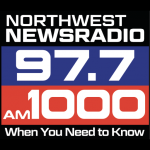
(WASHINGTON) — Following a series of close calls involving commercial flights, aviation leaders are set to meet Wednesday to discuss the incidents and work to identify patterns and factors fueling risks to the industry.
The Federal Aviation Administration announced the safety summit last month as part of a review of the nation’s aerospace system, looking at structure, culture, systems and integration of safety efforts.
“We are experiencing the safest period in aviation history, but we cannot take this for granted,” the FAA’s acting administrator, Billy Nolen, said. “Recent events remind us that we must not become complacent. Now is the time to stare into the data and ask hard questions.”
The summit will feature remarks from Nolen as well as Transportation Secretary Pete Buttigieg and National Transportation Safety Board Chairwoman Jennifer Homendy. The event will also include a panel moderated by Nolen and former NTSB Chair Robert Sumwalt, while participants will include various union and lobbying officials.
Nolen will ask participants about what they see in their own operations and request specific ideas about how to enhance the country’s safety net with concrete actions.
In an interview, Buttigieg said he has been seeing an “uptick” in close calls with aircraft in recent weeks.
“This year, we’re on track to have more than 20 — and even one is one that I would not like to see happen,” he told ABC News Transportation Correspondent Gio Benitez.
Buttigieg said he’s “very concerned” about these incidents but stressed the overall safety of the nation’s aviation system.
“We need to make sure that there is continuous improvement, continuous attention to our national aviation system,” Buttigieg said. “Air travel didn’t become the safest way to travel on its own. The American transportation system had to learn from decades of crashes.”
Data shows the more serious incidents have been declining over the last two decades even as the total number of incidents grows.
Buttigieg told ABC News that the rebound of aviation from lows seen during the COVID-19 pandemic has been “putting strain on the system” and the increased demand in air travel also may be contributing to the recent close calls.
When asked if experience among aviation workers is to blame, Buttigieg pushed back, saying, “It’s not just experience in general.”
“We are still talking about human beings,” he said. “And while, again, these cases are extremely rare — we’re not going to allow any of them to pass by without getting a very close, focused look at how it happened, why it happened and what steps could prevent it from happening.”
Buttigieg wrote to attendees of the safety summit on Tuesday, saying he expects to accomplish three things: identifying “patterns and risk factors,” identifying how the different parts of the aviation system can “address any risks” and identifying and implementing “additional steps” to reduce those risks.
“It is our responsibility to take a hard look at all factors and determine what steps are needed to reinforce a safety culture and strengthen safety practices, especially given significant disruptions and changes to the aviation sector coming out of a global pandemic,” Buttigieg wrote.
FAA and NTSB investigating a string of incidents
The FAA and NTSB are currently investigating six close calls involving commercial planes in recent months — five of which occurred at airports and one over the Pacific Ocean.
In December, United Flight 1722 bound for San Francisco experienced a sudden loss in altitude over the Pacific, officials have said. Shortly after takeoff from Maui, the Boeing 777 dropped to just 775 feet above the water in less than 20 seconds. The plane was then able to regain altitude and continue on to its final destination. There were no injuries.
On Jan. 13, an American Airlines flight crossed a runway at New York City’s John F. Kennedy International Airport without clearance from air traffic control, causing a Delta Air Lines plane to abort its takeoff from that runway, according to the NTSB. The closest point between the two aircraft was about 1,400 feet, a preliminary report from the agency stated.
Also in January, United Airlines 384 crossed a runway at Honolulu’s airport without clearance from air traffic control. A Cessna was landing on the same runway at the time. The Cessna came to a stop approximately 1,170 feet from the United flight, according to the FAA. There were no injuries or damage to the aircraft.
On Feb. 4, a FedEx plane landing at Austin-Bergstrom International Airport in Texas came within 100 feet of a Southwest Airlines jet taking off on the same runway, the FAA said. Both planes were given clearance from air traffic control to use that runway.
And in February, two more close calls, according to officials — one of which occurred at Sarasota-Bradenton International Airport in Florida after an air traffic controller cleared an American Airlines flight to land on the same runway an Air Canada Rouge plane was cleared to take off from. The American flight self-initiated a go-around and the two aircraft were approximately 3,100 feet from each other.
The other incident occurred at Boston Logan International Airport after a Learjet took off without clearance from air traffic control as a JetBlue flight was preparing to land on an intersecting runway.
Copyright © 2023, ABC Audio. All rights reserved.
